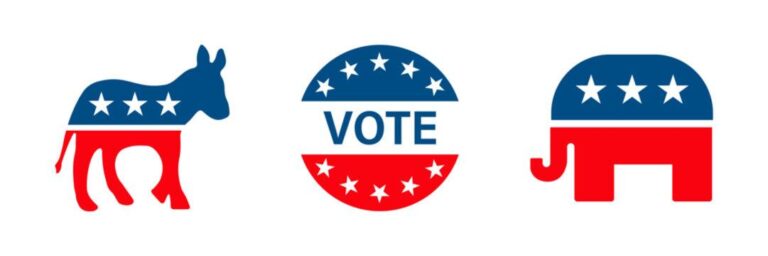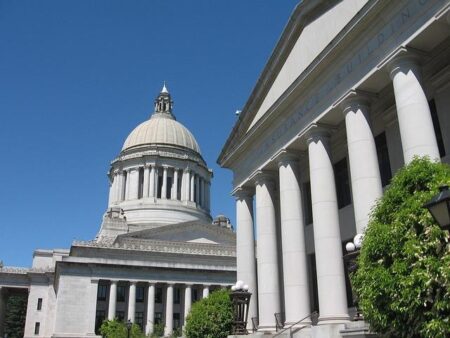Six months after a pivotal election cycle, the Democratic Party remains embroiled in internal debates and strategic recalibrations as it seeks a clear path forward. Facing a complex political landscape marked by shifting voter priorities, legislative challenges, and rising opposition, party leaders are intensifying efforts to define their vision for the future.This ongoing search underscores the broader challenges confronting the Democrats as they strive to maintain relevance and unity heading into the next phase of the American political arena.
Democrats Grapple with Identity Crisis Amid Shifting Political Landscape
The Democratic Party finds itself at a crossroads,struggling to reconcile the differing visions that define its broad coalition. Progressive activists push for bold policy changes on climate,healthcare,and economic justice,while more moderate voices advocate for pragmatic governance and electoral appeal. This internal tension has led to a palpable uncertainty about the party’s future direction, intensifying debates over leadership and messaging strategy ahead of upcoming elections.
Amid this turmoil, party officials and strategists are reassessing key demographic trends and voter priorities.Recent polling highlights fluctuating support across key groups, emphasizing the urgency to craft a unifying platform. The challenge remains: balancing the demands of a diverse base without alienating swing voters crucial in battleground states.
- Young voters: Increasingly energized by progressive causes.
- Suburban voters: Wary of extreme positions, favor stability.
- Working-class voters: Focused on jobs and economic security.
| Voter Group | Key Issues | Current Sentiment |
|---|---|---|
| Millennials | Climate change, education | Progressive leanings strong |
| Suburban Families | Healthcare, safety | Moderate, cautious |
| Rural Workers | Jobs, infrastructure | Growing disengagement |
Policy Divides and Leadership Challenges Stall Party Progress
Internal strife continues to plague the party as differing visions for the future stall any meaningful consensus. Progressive factions pushing for bold reforms clash with moderates advocating for incremental change, leading to legislative gridlock. This ideological tug-of-war is compounded by concerns over leadership’s ability to unite the party, with several high-profile figures struggling to bridge the divide.
Recent polling highlights growing frustration among the base, with many voters expressing doubt about the party’s direction and coherence. To address these challenges, some strategists propose:
- Revamping communication efforts to emphasize shared goals.
- Establishing new bipartisan committees to rebuild legislative momentum.
- Investing in leadership development programs to cultivate emerging voices.
| Issue | Faction | Impact |
|---|---|---|
| Healthcare Reform | Progressives | Demand for Medicare expansion stalls talks |
| Climate Policy | Moderates | Push for gradual implementation delays action |
| Economic Regulation | Mixed | Compromise remains elusive |
Grassroots Activism Emerges as Key to Rebuilding Voter Trust
Amidst ongoing political disillusionment, a surge of local initiatives is reshaping the Democratic strategy by focusing on community-driven efforts. Activists and organizers at the neighborhood level are working relentlessly to reconnect with voters through transparent dialog and targeted outreach programs.This approach emphasizes listening carefully to constituents’ concerns rather than relying solely on national messaging, which many felt had lost touch.Given the varied demographic and cultural landscapes across states, grassroots movements are crafting uniquely tailored solutions that resonate with local communities—breathing new life into political engagement.
Several key tactics have emerged as benchmarks of this revitalized approach:
- Door-to-door canvassing to establish personal contact and build trust
- Town hall meetings that prioritize open forums and active listening
- Partnerships with community organizations to harness existing networks
- Digital platforms for transparent updates and reciprocal communication
| State | Grassroots Initiatives | Voter Trust Index (Q1 2024) |
|---|---|---|
| Michigan | Community-led forums | 62% |
| Georgia | Faith-based voter drives | 58% |
| Wisconsin | Youth engagement campaigns | 65% |
Early indicators suggest that this hyper-localized activism is not only restoring voter confidence but also translating into more robust participation at the polls. Political analysts emphasize that these groundwork efforts might well be the linchpin in reversing the narrative of skepticism and rejuvenating the Democratic base for upcoming election cycles.
Strategic Recommendations Urge Focus on Economic Issues and Coalition Building
Amid ongoing internal debates and external pressures, party strategists emphasize that tackling economic concerns remains paramount. With inflation and job security continuing to dominate voter priorities, there is a growing consensus that policy proposals must directly address these issues to regain public trust. Experts suggest a sharper focus on economic messaging could re-establish the party’s relevance in a rapidly changing political landscape.
Together, coalition-building with moderate factions and influential community leaders is viewed as a critical component for achieving legislative successes. Collaboration across diverse groups is seen as essential to creating unified fronts capable of passing meaningful reforms. Key recommendations include:
- Engaging grassroots organizations to boost voter turnout and local support
- Strengthening ties with centrist lawmakers to facilitate bipartisan dialogue
- Focusing on shared economic priorities to build consensus in Congress
| Priority Area | Strategy | Expected Outcome |
|---|---|---|
| Inflation Control | Advocate for targeted subsidies and fiscal measures | Reduced cost of living pressures |
| Job Security | Support retraining programs and labor protections | Increased workforce resilience |
| Coalition Expansion | Partner with moderates and community leaders | Enhanced legislative effectiveness |
Insights and Conclusions
As Democrats continue to grapple with internal divisions and shifting political landscapes, the path forward remains uncertain. Six months after key setbacks, party leaders and strategists are intensifying efforts to unify their base and refine their message ahead of upcoming elections. The coming months will be critical in determining whether Democrats can effectively recalibrate their approach to regain momentum and connect with a broader electorate. For now, the search for a clear direction underscores the challenges facing the party as it seeks to redefine its identity and priorities in a rapidly evolving political habitat.




